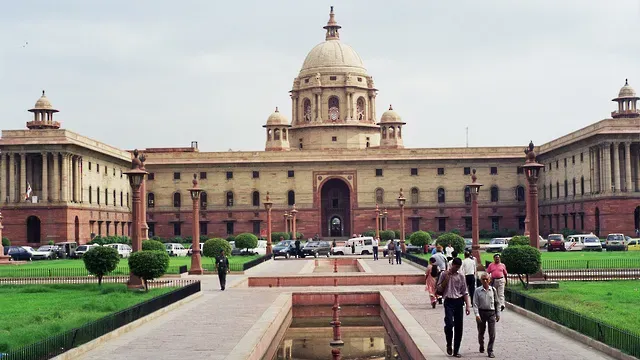The Weekend Read: IMF wakes up to threats of climate change for the financial world
In conversation with climate risk expert Xinyue Ma

After decades of warnings from scientists and environmental activists, financial institutions are starting to take climate change seriously. And it's not just banks - big and small - that are increasingly divesting from carbon intensive assets. Last week, the International Monetary Fund (IMF) published its Comprehensive Surveillance Review (CSR), a collection of policy papers updated every 7-10 years which guides the monitoring activities of the global financial institution. For the first time, the CSR includes a policy paper dedicated to climate risks.
I spoke with Xinyue Ma, researcher and project lead with the Global China Initiative at the Boston University Global Development Policy Center in the US, to learn how climate change threatens the financial world.
Lights On: What kind of climate related risks are concerning for the IMF, and why?
Xinyue Ma: Generally, the focus is on long term risks. For example, a lot of assets could be under physical risks when climate change [increases the frequency of extreme events]. The manufacturing and power generation sectors, as well as the coastal urban areas in general face these risks in the long run. With more extreme events, the wellbeing of a lot of people could also be on the line, which means there is going to be a lot more fiscal spending.
We talked about risks related to physical assets, but what happens in the financial world when these disasters occur?
When extreme weather events happen, the humanitarian crisis and public health emergency would require greater public spending; irregular weather patterns could also affect agriculture and other production activities, impacting economic output and tax revenue. The commodity prices would also face greater volatility, affecting a country's economic stability. Added together, these factors could contribute to greater private and public debt, and even in some past cases trigger sovereign debt defaults.
The world is transitioning away from fossil fuels. Even the International Energy Agency now recommends a fast and deep decarbonisation if we want to meet our climate targets. How will this transition impact the financial systems, both within and across borders?
The financial system as a whole will become more resilient once the economy runs on more sustainable energy and climate change is mitigated. However, there will be transition risks in the process. For example, moving away from fossil fuels increases the risk of assets becoming stranded, as renewable energy becomes more cost-competitive and climate policies strengthen.
The sector could also face unemployment; the transition could lead to a mismatch in the skills structures of the labor force. In some cases, the renewable energy sector also risks overheating [expanding at an unsustainable rate]. Governments will need to come up with the right incentives to facilitate the financial capital to transition from fossil fuels to clean energy in an orderly way, while supporting a just transition for the people whose livelihoods depended on fossil fuels.
In this effort, green finance and ESG investment will become more mainstream. Many countries and regions are already starting to work on greening the entire financial system. Climate risks will be incorporated into financial regulations and risk assessments.
Across borders, the commodity prices and trade patterns will change as the demand and supply dynamics shift from fossil fuels to renewable energy. Markets that depended more on fossil fuel exports will face less demand and greater uncertainty. Greater economic demand and investment will shift to exporters in the renewable energy supply chain, but will also be accompanied by fluctuations in commodity prices, which could affect exchange rates and currency stability. In the long run, the landscape of world trade will likely change. Countries that rely on primary commodity exports in both the fossil fuels and renewable energy sector will need to diversify their economic structure to remain resilient.
How do these risks pan out in practice? Could you think of an example for people not familiar with the financial world?
Small island countries could be particularly vulnerable to climate risks. Between 2004 and 2006, Hurricane Ivan prompted Grenada’s sovereign debt restructuring. The Dominican Republic’s sovereign debt restructuring in 2005 was also partly due to damage caused by hurricanes in the two preceding years. To mitigate these risks, countries would need to step up investment in both climate change mitigation and resilience measures – to decarbonise the economy while also strengthening investment in areas like urban sewage, flood prevention, electricity system operations, improving ecosystem services and more.
For countries that are already facing fiscal challenges, these investments could be difficult from a short-term perspective. This would require systematic coordination on the fiscal situations, as well as clear policy incentives to facilitate international and private financial resources in these spaces.
Moving to China and South Asia, what are the climate change risks affecting the two regions, and what are their respective economies' vulnerabilities?
China and South Asia are highly vulnerable to climate change risks.
Both areas are prone to severe heat waves, droughts, floods, which would lead to socioeconomic, ecological and agricultural yield losses. The high population density and concentration of economic activities in coastal urban cities exacerbate the problem.
From the transition risks perspective, both China and South Asia are fast growing and high energy-consuming economies. In China, India, and Bangladesh in particular, the fast-growing demand could let the inertia of deploying fossil fuels take the upper hand, and lock in more carbon emissions that could exacerbate physical climate impacts and risk becoming stranded assets in the future.
What are some of the measures China and the South Asian countries should take to shield their economies from these particular climate risks?
Again, we need to discuss the two aspects mentioned above – climate change mitigation and adaptation. Given the sheer sizes of their fossil fuel consumption and carbon emission, China and India are key countries in the global effort of climate change mitigation and energy transition. Both countries are already making great progress scaling up renewable energy deployment, but will need to reform the electricity system to prioritise greater renewable energy dispatch, and phase out fossil fuels while guaranteeing a just transition.
Among others, a central task for China is an orderly transformation of the economic structure, which is currently very energy intensive. For India, phasing out fossil fuel subsidies and transforming the transport sector are some of the hardest nuts to crack. In countries where full energy access is not yet achieved, such as Bangladesh, Pakistan, and Afghanistan, the key task is to mobilise finance and investment for renewable energy to quickly meet the demand gap. This will need to go together with strengthening the whole electricity market, including the transmission and distribution infrastructure, while exploring distributed renewable energy. For South Asian countries where renewable energy penetration is already high, such as Bhutan and Nepal, the policy focus should be to diversify the mix of renewable energy. All countries will need to enhance climate change resilience infrastructures against extreme weather events and/or rising sea level.
On a systemic level, shifting the direction of finance and investment is a key factor to enable all the above. Countries need policies that encourage green finance, recognise the risks of carbon-intensive assets, and make efforts towards greening the whole financial system. The IMF will likely assess these fiscal, monetary and financial system policies in greater detail, and make more specific suggestions. We’ll see what comes out when the Article IV (surveillance reviews) for these countries are published, which is usually around July.
That’s all for today! If you like what you read, please consider signing up for free or as a member:



